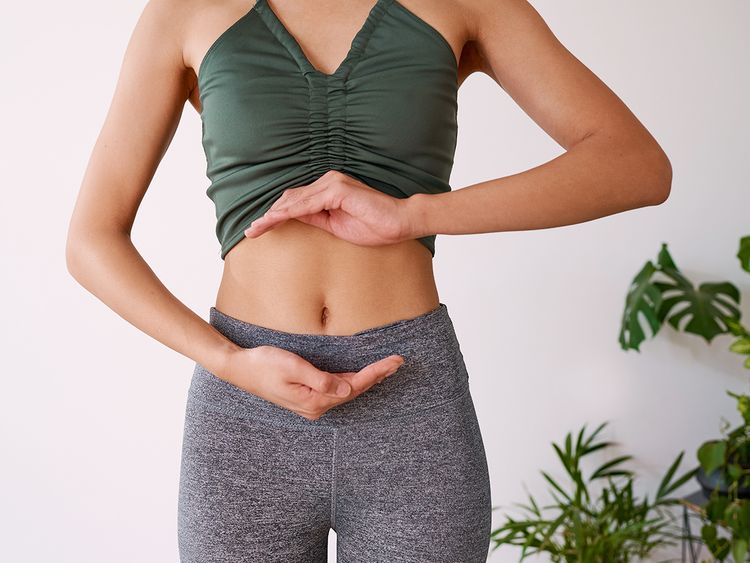Active people’s microbiomes can be quite different from those who rarely exercise.
Your gut may help motivate you to exercise. Or it might nudge you to skip your workout.
Which direction you take appears to be influenced by your diet and the health of your microbiome, the name given to the communities of bacteria, viruses and fungi that live in the intestines.
Intriguing new mouse studies show that the makeup of an animal’s microbiome influenced how much it wanted to exercise, in part by sending signals to the animal’s brains. Change a mouse’s microbiome, and you changed whether it felt like moving.
Although the new studies involved animals, they amplify and extend recent human research showing that active people’s microbiomes can be quite different from those of people who rarely exercise. The findings raise the possibility that, depending on how we alter our internal microbes, we might wind up enjoying – or avoiding – exercise more.
Can we boost our interest in exercise by taking probiotics or changing our diets or otherwise tweaking our gut bugs, though? Eventually, probably.
Microbiomes are also quite malleable. Our gut bugs’ numbers and types surge and dip, depending on how we live, including whether and how we exercise. A study last year found that elite, cross-country skiers’ guts contained fewer types of bacteria after a grueling season than the microbiomes of healthy non-athletes, but more of the remaining strains found in the athletes were associated with metabolic health.
While we know that exercise can influence the health of the microbiome, it’s much less clear whether the effects work the other way, and your microbiome can influence your exercise. Anecdotally, people and lab mice taking antibiotics don’t exercise much, but the reason might be that they probably felt ill before starting the drugs, discouraging physical activity.
If you give a mouse an antibiotic . . .
So, scientists at the University of California at Riverside decided to wipe out the microbiomes of mice that love to run and see how they’d respond. The UC-Riverside mice were part of an ongoing experiment in which female mice, that ran more than their lab mates, were bred to male mice of the same persuasion. Over multiple generations, the scientists developed a strain of super-runner mice. These animals voluntarily ran on wheels about three times as much as other mice. They also developed different microbiomes.
Now, for a study published last year in Behavioural Processes, the scientists gave some of these marathon mice broad-spectrum antibiotics, to kill off most of their gut bacteria. The animals continued to eat and otherwise live in unchanged ways, indicating the antibiotics hadn’t sickened them.
But when the researchers gave the animals free access to running wheels, the marathoner mice’s running mileage fell steeply. They averaged about 21 percent less distance every day, numbers that barely rebounded during the subsequent 12 days of the study.
The new experiment underscored “just how much” the microbiome seemed to be influencing the athletic animals’ willingness to run, said Theodore Garland, an evolutionary biologist at UC-Riverside, whose lab developed the marathon mice and who oversaw the new study.
How the gut talks to the brain
But Garland’s study didn’t look at how microbiomes affect exercise motivation. For that, we need the results of another ambitious study, published in December in Nature, which looked deep inside the guts and brains of mice.
In the study, scientists at the Perelman School of Medicine at the University of Pennsylvania and other institutions gathered eight types of mice, which naturally ran different daily distances, and began genotyping them and checking thousands of molecules released in their guts, blood, and brains before and during exercise.
They also gave some of the mice antibiotics, bred others to have no microbiomes from birth, let them run or sit, gathered more tissues, transplanted fecal samples from happily running mice with robust microbiomes into mice without gut bugs – and vice versa – and kept gathering reams of genetic and tissue samples.
By the end they had more than 2.1 million data points about their mice.
What they uncovered in that data was a direct communication link from the gut to the brain, activated by exercise. This communication began, they found, with the release of certain molecules in the gut during exercise, that then stimulated specialized nerves connecting the gut and midbrain.
Once turned on, these nerves sent signals prompting the release in the brain of extra dopamine, the neurochemical most associated with rewards and motivation. The scientists also found that the higher the amounts of several, specific strains of bacteria in the animals’ guts, the more dopamine their brains produced, and the more the mice ran.
When the scientists disrupted any step in the communications link, by killing gut bacteria with antibiotics or chemically blocking nerve activity or dopamine release, the affected animals started running less.
“They lost interest” in exercise, Thaiss said.
He and his co-authors speculate the gut’s involvement in exercise behavior may have evolved long ago in response to food availability. Animals that often wandered and explored – that regularly exercised – found more food, survived, and reproduced, passing along the gut-brain links that encourage exercise.
What this research means for us is still somewhat theoretical. We are not mice, although we share most of the same nerves and midbrain processes. So “it’s quite plausible” that our motivation to exercise – or not – depends, in part, on the composition of our gut bacteria, Garland said.
Can we boost our interest in exercise by taking probiotics or changing our diets or otherwise tweaking our gut bugs, though? “Eventually, probably,” Thaiss said. But scientists first need to identify the precise types of gut bacteria involved in exercise motivation in people, assuming they exist, he said, which could take years.
In the meantime, the mouse studies suggest exercise may be its own best motivator. When we work out, we remake our microbiome, and our renovated gut can then, it seems, reinforce our desire to exercise.
But to benefit, the first step is to take some first steps.

